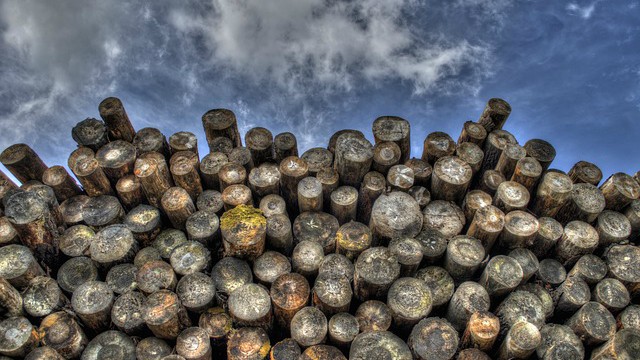Canfor Corporation (TSX:CFP) has operations in Canada and the U.S. and is a leading producer of integrated forest products. The company also owns the majority stake (53.6%) of Canfor Pulp Products Inc (TSX:CFX), which is in the pulp and paper industry and operates in B.C.
The main drivers of the demand for lumber come from the construction industry and, to a lesser extent, the housing markets. As construction projects ramp up, including repairs and remodeling, so too will the need for lumber products. However, the risk is that Canadian lumber getting to the U.S. might be a lot more expensive if significant duties are applied.
The previous softwood lumber agreement from 2006 stated that when lumber was sold at a price of US$355 per Mfbm (thousands of board feet), then an export tax would be applied in the range of 5% up to a maximum of 15%. The tariffs imposed by the U.S. in early April meant duties could climb up to 24%.
Canfor specifically would face duties of 20.26%, while West Fraser Timber Co. Ltd. (TSX:WFT) would see a duty of 24.12%. However, if that weren’t enough, the duties were increased again later in the year by about 7%. The combined duties now have Canfor sitting at almost 28%, while West Fraser has risen to just under 31%.
Despite all of these increases, it is important to note that these are preliminary tariffs only and that the final figure could come in lower than what it is now. The final duties are not likely to be known until early in the new year.
A new agreement could also apply duties retroactively up to 90 days if certain criteria are met. However, Canada could still appeal the duties once finalized (and that is expected) to NAFTA and the World Trade Organization.
But just in case, the Canadian government is trying to mitigate against potentially unfavourable duties and the adverse impacts the duties will have on the industry. One option the government is looking at is trying to find other markets, such as Asia, that Canada could export its lumber to.
But you wouldn’t know there is a problem by looking at Canfor’s stock price, as, year to date, the price has increased over 31%. Part of this is likely that a lot of the risk was already priced into the stock as many people saw these issues coming and some would argue the duties were actually lower than expected. That could, of course, all change once the final duties are known, since investors may be expecting the final duties to come in lower (which has happened in the past).
Similarly, West Fraser also has seen its share jump over 28% so far this year, and the company has been hit with the highest duties so far.
The problem going forward for investors is there is still a lot of uncertainty in the air. Although analysts can try to forecast duties, the one problem is that President Trump has shown he is not always conventional, and what happened in past agreements may not happen again now.









